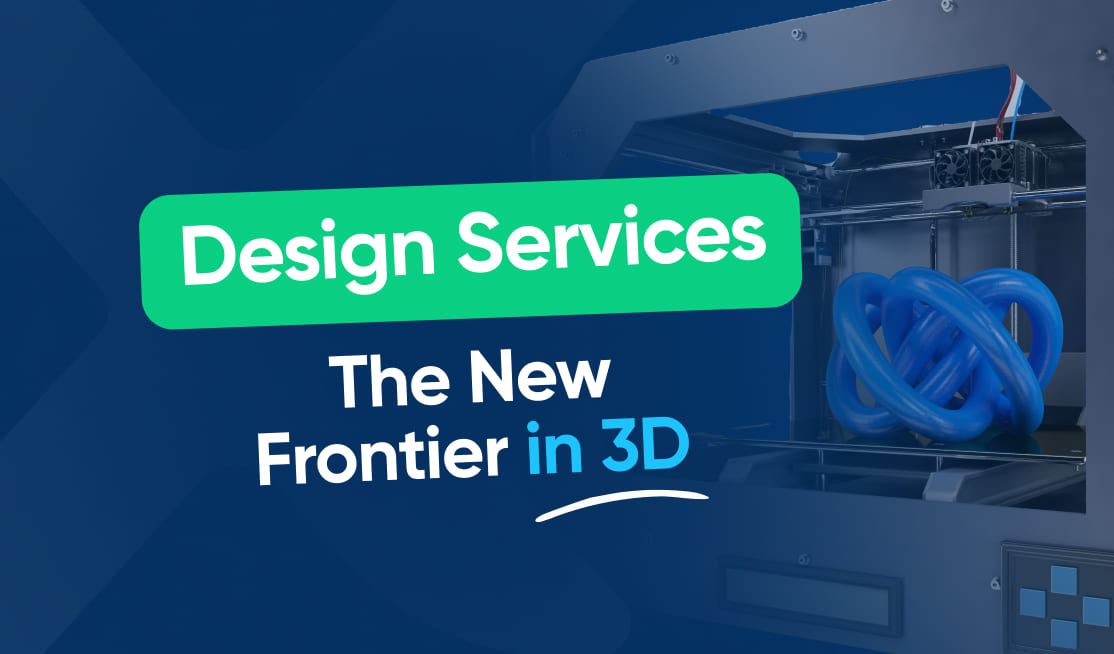
3D printing has rapidly emerged as a groundbreaking technology that has revolutionized various industries. With its ability to create three-dimensional objects by layering materials, 3D printing has opened up a world of possibilities for designers, engineers, and entrepreneurs. In conjunction with the rise of 3D printing, the demand for 3D design services has also seen significant growth. This article explores the basics of 3D printing, its evolution, its impact on various industries, the emergence of 3D design services, and the future of this technology.
Understanding the Basics of 3D Printing
Before delving into the intricacies of 3D printing and design services, it is crucial to understand the fundamental principles of this technology. At its core, 3D printing involves the creation of physical objects from digital models using additive manufacturing processes. Unlike traditional manufacturing methods that involve subtracting materials, 3D printing builds objects layer by layer. This enables greater design flexibility, customization, and rapid prototyping.
Imagine a world where you can turn your ideas into tangible objects with just a few clicks. That’s the power of 3D printing. This revolutionary technology has transformed various industries, from manufacturing and healthcare to fashion and architecture. But how does it work?
The Technology Behind 3D Printing
Various technologies enable 3D printing, each with its unique characteristics and applications. The most common technology is fused deposition modeling (FDM), which uses thermoplastic filaments extruded through a nozzle. This process allows for the creation of durable and functional prototypes. Other techniques, such as stereolithography (SLA) and selective laser sintering (SLS), use lasers to solidify liquid resin or powdered materials, respectively. These techniques are ideal for producing intricate and highly detailed objects.
Let’s take a closer look at each of these technologies:
Fused Deposition Modeling (FDM): This popular 3D printing technique involves melting a thermoplastic filament and depositing it layer by layer to create the desired object. FDM printers are widely accessible and affordable, making them a popular choice for hobbyists and small businesses.
Stereolithography (SLA): SLA printers use a liquid resin that is cured by a UV laser. The laser selectively solidifies the resin, layer by layer, to form the final object. SLA printing offers high precision and smooth surface finishes, making it suitable for applications that require intricate details.
Selective Laser Sintering (SLS): SLS printers utilize a powdered material, such as nylon or metal, which is selectively fused together using a laser. This technique is particularly useful for creating complex geometries and functional prototypes.
Different Types of 3D Printing Techniques
Besides the technology used, 3D printing encompasses several techniques that cater to diverse design requirements. These techniques include selective laser melting (SLM) for metal parts, digital light processing (DLP) for high-resolution objects, and bioprinting for creating living tissues. With an ever-expanding range of 3D printing techniques, the possibilities for innovation are virtually limitless.
Selective Laser Melting (SLM): SLM is a variation of SLS that specifically focuses on metal parts. It involves melting metal powder using a high-powered laser to create fully dense and functional metal objects. This technique is widely used in industries such as aerospace and automotive, where the production of complex metal components is essential.
Digital Light Processing (DLP): DLP printers use a similar principle to SLA, but instead of a laser, they employ a digital light projector to cure the resin. This technology enables the rapid production of high-resolution objects, making it ideal for applications that require intricate details and smooth surfaces.
Bioprinting: One of the most exciting frontiers of 3D printing is bioprinting, which involves the fabrication of living tissues and organs. Bioprinters use a combination of living cells, biomaterials, and growth factors to create functional biological structures. This technology has the potential to revolutionize healthcare by enabling the production of patient-specific organs and tissues for transplantation.
As 3D printing continues to evolve, new technologies and techniques are constantly emerging. From multi-material printing to large-scale construction, the possibilities are expanding at an unprecedented rate. Whether you’re an engineer, artist, or medical professional, 3D printing offers a world of opportunities to bring your ideas to life.
The Evolution of 3D Printing
3D printing is not a recent phenomenon but rather the result of decades of research and development. The roots of 3D printing can be traced back to the 1980s when the first 3D printers were invented. However, it was not until the early 2000s that 3D printing gained traction and became more accessible to a wider audience.
During the early beginnings of 3D printing, the technology was limited to industrial applications, primarily for prototyping purposes. Engineers and designers utilized 3D printers to create physical models of their designs, allowing them to test and refine their concepts before mass production. This early adoption of 3D printing in the industrial sector laid the foundation for its future growth and development.
As the technology advanced, it became more affordable and user-friendly, leading to its adoption in various sectors. Small businesses and entrepreneurs began to recognize the potential of 3D printing in transforming their manufacturing processes. With the availability of open-source 3D printers and a vibrant maker community, individuals were empowered to experiment and innovate with this groundbreaking technology.
Early Beginnings and Development
Initially, 3D printing was limited to large corporations and research institutions due to its high cost and complexity. However, as the technology matured, it became more accessible to smaller businesses and even individuals. This democratization of 3D printing opened up new possibilities and sparked a wave of creativity.
One significant development in the early days of 3D printing was the introduction of new materials. Initially, 3D printers could only work with plastic polymers, but advancements allowed for the printing of metals, ceramics, and even food. This expanded the range of applications for 3D printing, enabling the creation of complex and functional objects.
Furthermore, the introduction of new printing techniques, such as selective laser sintering (SLS) and stereolithography (SLA), revolutionized the precision and speed of 3D printing. These techniques allowed for the creation of intricate and detailed objects with high accuracy, paving the way for applications in fields like healthcare, aerospace, and architecture.
Current Trends in 3D Printing
Today, 3D printing continues to evolve rapidly, accompanied by emerging trends that shape its trajectory. One notable trend is the integration of 3D printing with artificial intelligence (AI) and machine learning. This combination enables autonomous optimization of designs and streamlines the printing process. AI algorithms can analyze and optimize complex geometries, reducing material waste and improving the overall efficiency of 3D printing.
Another significant trend in 3D printing is the focus on sustainability. As environmental concerns grow, the industry is shifting towards more eco-conscious practices. This includes the use of sustainable materials, such as biodegradable plastics and recycled filaments. By embracing these materials, 3D printing can contribute to reducing waste and minimizing its environmental impact.
Furthermore, 3D printing is increasingly being used in the field of medicine. From creating patient-specific implants to printing organs and tissues, this technology has the potential to revolutionize healthcare. Researchers are exploring the possibilities of bioprinting, a technique that uses living cells to create functional biological structures. This could lead to advancements in regenerative medicine and personalized healthcare.
As 3D printing continues to advance, it holds the promise of transforming various industries and empowering individuals to bring their ideas to life. With ongoing research and development, we can expect to see even more exciting applications and innovations in the future.
The Impact of 3D Printing on Various Industries
The impact of 3D printing extends far beyond its technical aspects. This technology has disrupted traditional manufacturing methods and provided new opportunities for innovation across multiple sectors.
3D Printing in Healthcare
In the healthcare industry, 3D printing has revolutionized personalized medicine, prosthetics, and medical device manufacturing. By enabling the creation of patient-specific implants and prosthetics, 3D printing enhances treatment outcomes and improves patients’ quality of life. Moreover, it facilitates the rapid prototyping of medical devices, accelerating the development of innovative solutions.
3D Printing in Manufacturing
Manufacturing is another industry greatly influenced by 3D printing. With the ability to produce complex and customized parts, manufacturers can streamline production processes, reduce costs, and enhance product performance. Moreover, 3D printing enables on-demand manufacturing, eliminating the need for extensive storage and logistics for spare parts.
3D Printing in Architecture and Construction
Architects and construction professionals have embraced 3D printing as a tool to push boundaries in design and construction. 3D printing allows the creation of intricate architectural models, rapid prototyping of building components, and even the construction of entire structures. This technology not only enhances efficiency but also enables sustainable practices by reducing waste and utilizing eco-friendly materials.
The Emergence of 3D Design Services
As the adoption of 3D printing continues to grow, the demand for skilled 3D designers has risen significantly. 3D design services play a crucial role in transforming concepts into tangible objects ready for the 3D printing process.
The Role of 3D Design in 3D Printing
A skilled 3D designer possesses a deep understanding of both design principles and the technical requirements for successful 3D printing. They translate clients’ ideas into digital models, ensuring optimal functionality and manufacturability. Furthermore, 3D designers can optimize designs for specific 3D printing technologies, materials, and post-processing requirements.
The Demand for 3D Design Services
In recent years, the demand for 3D design services has skyrocketed as more industries recognize the value of 3D printing. Companies across various sectors, from automotive to fashion, are leveraging 3D design services to develop innovative products and gain a competitive edge. Additionally, individuals and hobbyists are embracing 3D design services to bring their creative visions to life.
The Future of 3D Printing and Design Services
The future of 3D printing and design services looks promising, with immense potential for further growth and innovation.
Predicted Trends and Innovations
As technology progresses, 3D printing is expected to offer even greater precision, speed, and material options. Improvements in multi-material and multi-color 3D printing are anticipated, enabling the creation of highly complex and lifelike objects. Moreover, advancements in generative design algorithms and AI-driven optimization will further revolutionize the design process, unlocking new possibilities.
The Challenges and Opportunities Ahead
While the future of 3D printing and design services appears bright, there are challenges to overcome. Issues such as copyright infringement, quality control, and material sustainability require careful consideration. With collaboration between industry experts, policymakers, and designers, these challenges can be addressed to unlock the full potential of 3D printing for a sustainable and innovative future.
In conclusion, the rise of 3D printing and design services has created a paradigm shift in various industries. From its humble beginnings to its current widespread adoption, 3D printing continues to reshape manufacturing, healthcare, architecture, and more. Coupled with the increasing demand for skilled 3D designers, this technology presents boundless opportunities for innovation and customization. As the future unfolds, 3D printing is poised to further transform industries and redefine what is possible.


